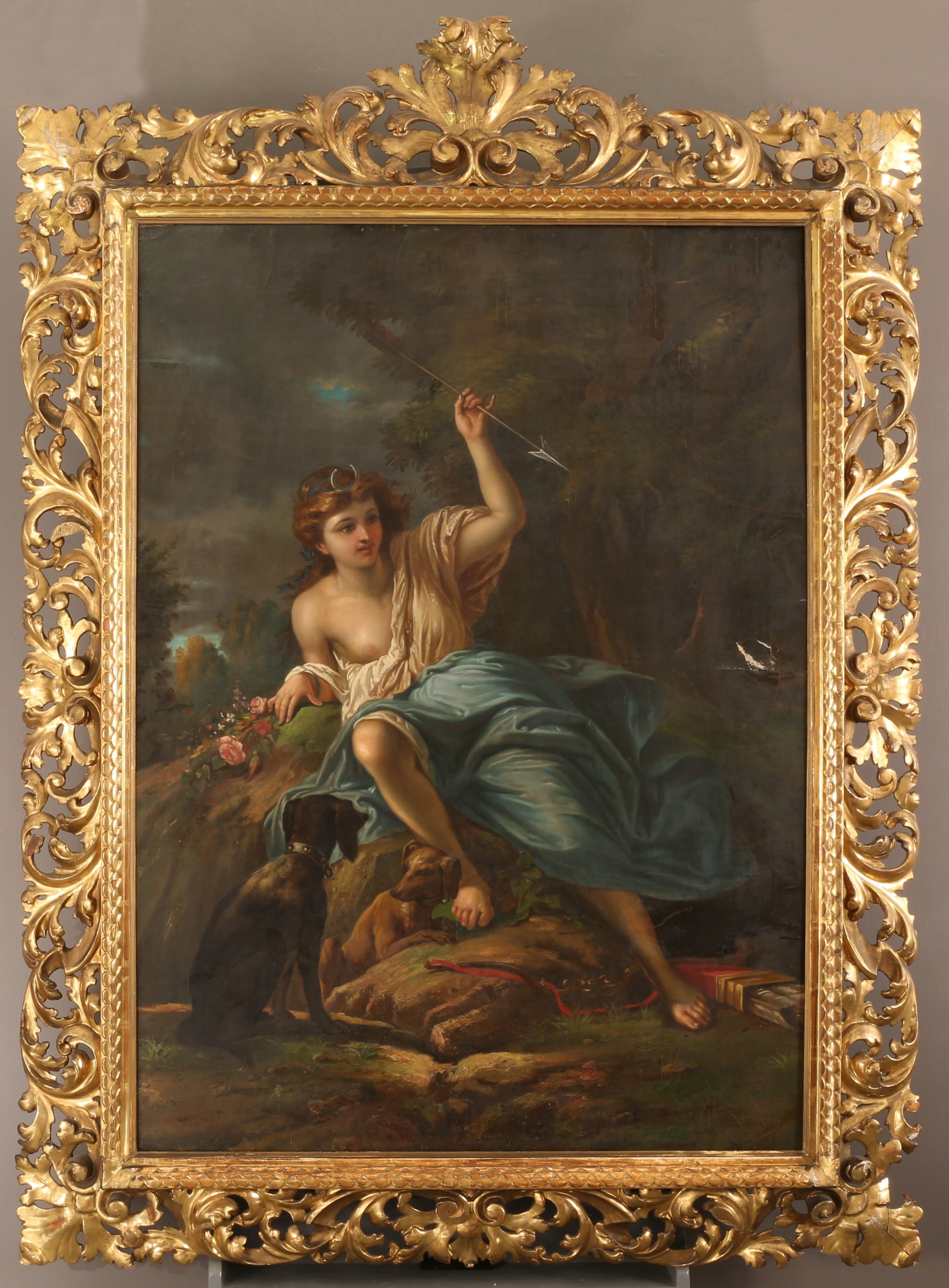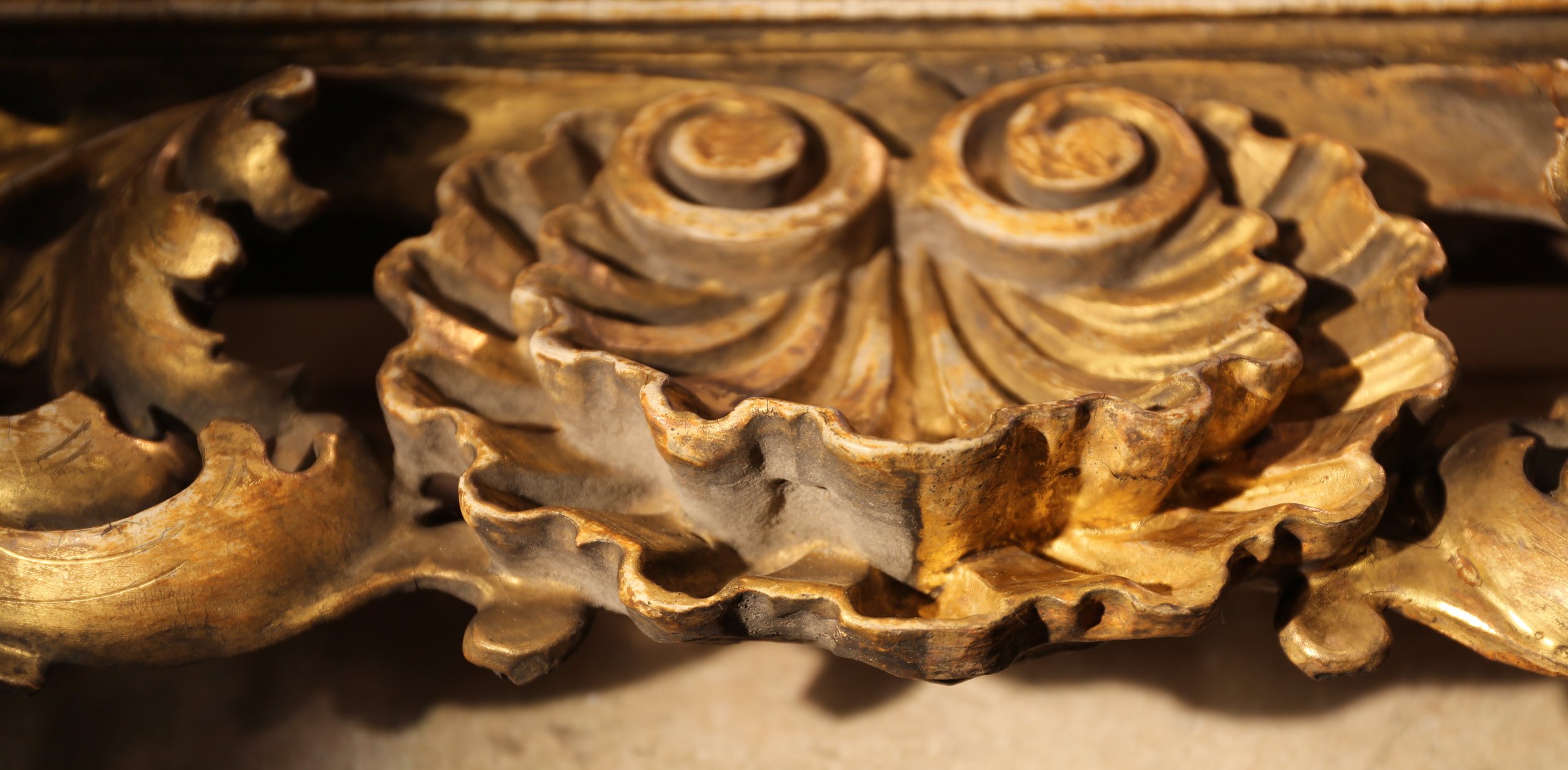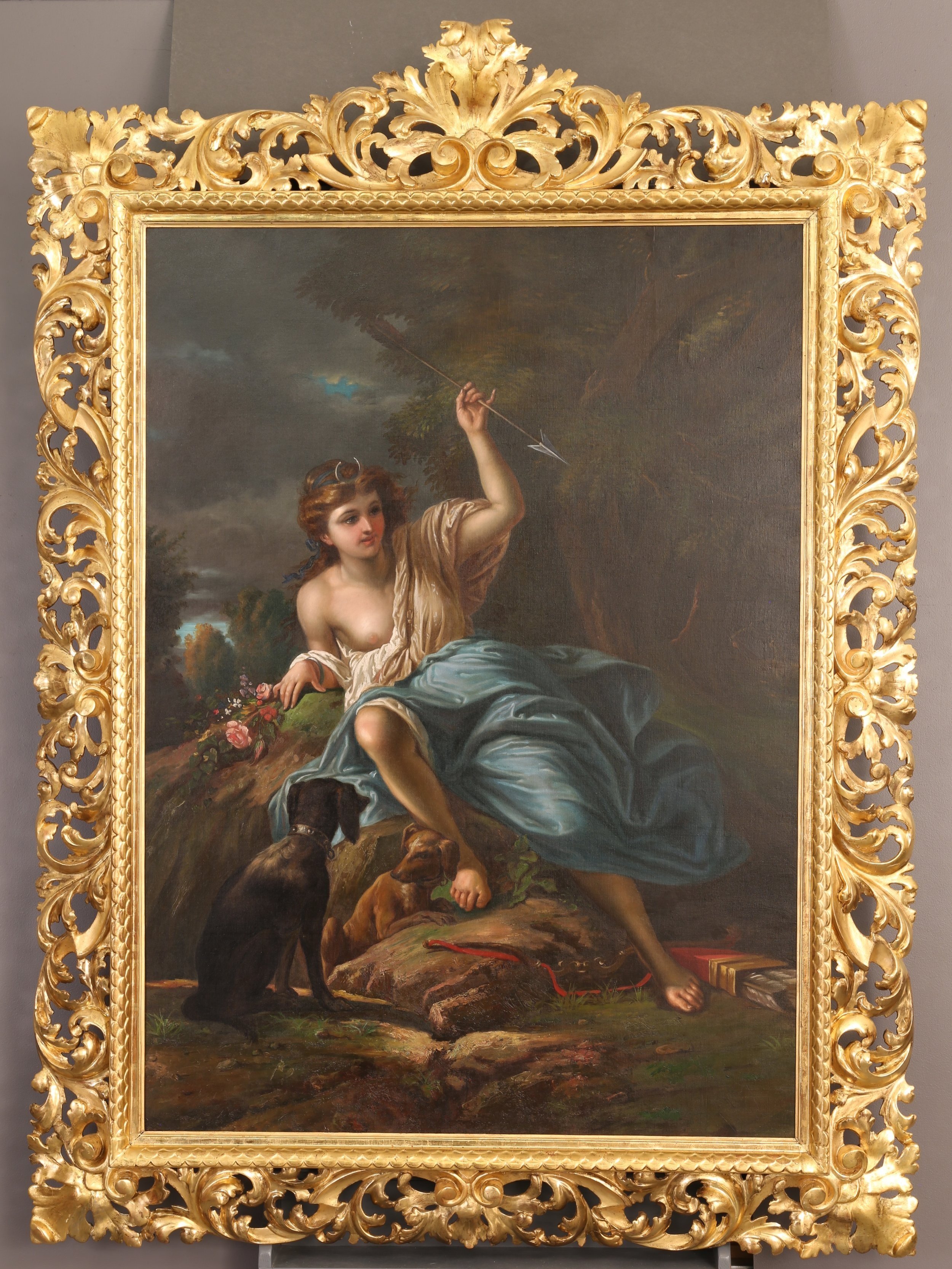Diana and LaCarta – 18th c. – Hand-carved Ornate Gilt Frames
Left - Diana, Right - La Carta.
-
La Carta is attributed to a “Prof. Giotti” from “The French School,” which is believed to have been in Paris. Numerous documents regarding this piece refer to the artist’s name with a number of different spellings (Gotti, Giotti, Giotta, Giotto), which could be a translation or phonetic spelling. Diana was purchased as a sister piece to La Carta and is attributed to a student of “Prof. “Giotti” at the French school. This piece was originally thought to depict the Roman goddess of Minerva (also known as the Greek goddess Athena), but the symbolism in the painting evidenced the Roman myth of Diana instead (also known as Artemis in Greek mythology).
-
Although the treatment of the paintings was important, these spectacular frames are the story we would like to talk about. Expertly hand-carved and gilded and using paper-thin sheets of gold leaf, each of the two frame makers used both water and oil gilding techniques to create the superb frames. Many of the finishing touches were highlighted by burnishing the gold over a surface of porous colored clay bole. The preparatory gesso undercoating and surface gilding were cracked, detaching, and flaking throughout both of the frames. The majority of the sections where gold leaf was attached using a water-soluble adhesive (water gilding), was now abraded from years of dusting with a damp cloth (The adhesive used for this gilding was water soluble. It slowly wears away every time it was cleaned). The La Carta frame was in much worse condition than Diana’s frame. The wooden substrates of both frames had shrunk slightly with age and created voids between the backside of the gesso coating and the wood. When these fragile areas were hit or touched, the gesso had crumbled and flaked away. The surfaces of the frames were also noticeably dirty. In addition to the surface damage, there were more than a dozen parts of carved ornamentation missing from each frame. Several of the wooden sections were cracked or had fallen off through the years and were now missing. Much of the original animal skin glue holding the joints together had failed with age. The top central carved element on the Diana painting was very fragile, and badly damaged.
Surface Cleaning
Image - Half clean detail of La Carta frame
After some necessary consolidation of flaking gesso and leaf was completed, the surface on both frames were cleaned. Both organic and aqueous solvent solutions and mixtures were used to safely remove grime, dirt, overpaint, deteriorating animal skin glue toning, and embedded soot. Because of the heavy deposits on the surface, more than one cleaning was required.
Half cleaned detail of visible dirt removal, gold leaf abrasion and structural cracking on the Minerva frame topknot.
Consolidation
Image - Adhesive being pushed into cracked substrates
Structurally damaged and lifting gesso, gilder’s composition, and gilding were consolidated using conservation-grade varnish and adhesives. All cracking wooden frame substrate sections were consolidated using wood-appropriate adhesives. Missing wooden elements were carved and attached where missing, and some fragile thin wooden leaves/scroll elements were reinforced on the unseen back sides with support splints applied with wood screws.
Pictured - The central top crest on the Diana frame was removed temporarily until repairs could be made to help support its weak and fragile structure.
Casting New Pieces
Image - cast sections are being attached where elements were missing on the Diana frame
Missing ornamentation were cast from moulds made from intact corresponding frame sections using a two-part carve-able resin bulked with microspheres. The cast sections were reattached to the frame using an adhesive and stainless steel reinforcing pins were added for additional support where necessary. Frame losses were filled with gesso.
Missing elements were cast and reattached to match original elements, as seen on the La Carta frame.
Gilding & Inpainting
Image - Gold leaf being carefully applied to the gesso
Because of the extent of damage to the gilding on both frames, it was not possible to repair or add to the existing gilding. To make it all look correct, we re-gilded both frames. Both surfaces were prepared for application of new gold leaf. A brush applied layer of newly prepared gesso was added to the surfaces of both newly cast ornament sections/fills and areas where very little remaining gesso base remained before re-gilding. Appropriate clay boles were applied to the frame surfaces to match original work, followed by animal skin glue size. Recessed areas were oil gilded while the remaining flat surfaces and straight smooth molded surfaces were water gilded and burnished to a mirror finish using agate burnishers. Italian loose leaf 23.75 karat gold was used for water and oil gilding on both frames. Mica powders mixed with varnish were used for toning edges and exposed backs of ornamentation. A curatorial discussion was held with the collection’s curator and a joint decision was made to lightly abrade and tone the newly gilded areas to produce a slightly worn appearance to match the original remaining gilded areas on this frame. Once complete, both frames were reunited with their newly cleaned and conserved paintings.
Detail of a half-gilded section of the abraded inner lining shows the drastic improvement in condition after treatment
After Treatment
Re-installing the finished La Carta and Minerva framed paintings behind Nemacolin’s lobby concierge desk.





















